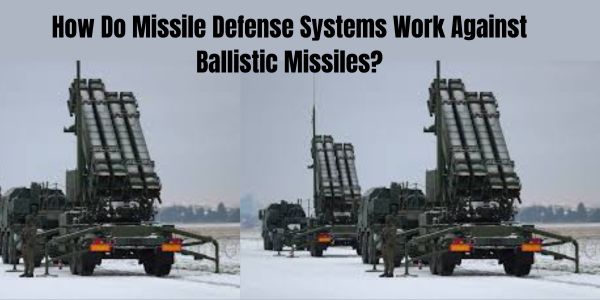Ballistic missiles, with their speed and destructive power, are among the most formidable weapons in modern warfare. To counter them, nations have developed missile defense systems—sophisticated networks designed to detect, track, and intercept these threats. But how do they work? This article explains the mechanics of missile defense, the types of systems in use, and the challenges they face.
What Is a Missile Defense System?
A missile defense system is a military setup that aims to neutralize ballistic missiles before they strike their targets. These systems use advanced radars, satellites, and interceptors to identify and destroy incoming missiles during their flight. The process hinges on intercepting the missile in one of its three phases: boost, midcourse, or terminal.
MUST READ: What Are Ballistic Missiles? An In-Depth Explainer
MUST READ: THAAD Air Defense System: How It Works in 2025
The Three Phases of Missile Defense
Missile defense operates across the ballistic missile’s flight stages:
- Boost Phase
- What Happens: The missile is intercepted right after launch, while its engines are still firing.
- Why It’s Tough: This phase lasts only 1-5 minutes, and the missile is accelerating fast. Plus, interception often occurs over enemy territory, raising political risks.
- Current Status: No widely deployed system targets this phase yet, though experimental technologies like airborne lasers are in development.
- Midcourse Phase
- What Happens: The missile is intercepted in space, after its engines burn out but before it reenters the atmosphere.
- Why It’s Key: This is the longest phase, giving defenders more time to act.
- Challenges: Missiles may release decoys or countermeasures, confusing interceptors.
- Example: The U.S. Ground-based Midcourse Defense (GMD) launches interceptors from Alaska and California to tackle intercontinental ballistic missiles (ICBMs) here.
- Terminal Phase
- What Happens: The missile is intercepted as it descends toward its target.
- Advantages: The path is predictable, and decoys often burn up during reentry.
- Challenges: The time window is tiny, and speeds are hypersonic.
- Examples: The Patriot Advanced Capability-3 (PAC-3) handles short- and medium-range threats, while THAAD targets intermediate-range missiles.
How the System Comes Together
Missile defense relies on three core components:
- Sensors:
- Ground-based radars (e.g., AN/TPY-2) and satellites like the Space-Based Infrared System (SBIRS) detect launches and track missiles.
- Interceptors:
- Weapons like the Exoatmospheric Kill Vehicle (EKV) or Standard Missile-3 (SM-3) collide with missiles to destroy them, using kinetic energy instead of explosives.
- Command Systems:
- Networks like the U.S. C2BMC system process data and guide interceptors to their targets.
Real-World Examples
- U.S. Defense: The U.S. uses GMD for ICBMs, THAAD in places like South Korea, and PAC-3 for shorter-range threats.
- Israel’s Arrow: Paired with the Iron Dome, this system protects against ballistic missiles.
- NATO: The ALTBMD program integrates allied systems for regional defense.
What Are the Limits?
Missile defenses aren’t perfect:
- Decoys: Advanced missiles deploy fakes to trick interceptors.
- Hypersonic Threats: Newer, maneuverable missiles challenge existing systems.
- Cost: Interceptors are pricey, and success isn’t guaranteed—GMD’s test record hovers around 55%.
Looking Ahead
Future defenses might include lasers, space-based interceptors, or AI to counter evolving threats like hypersonic missiles.
Conclusion
Missile defense systems are a vital shield against ballistic missiles, intercepting them across multiple flight phases. While not flawless, they’re a cornerstone of modern security—and they’re only getting smarter.

